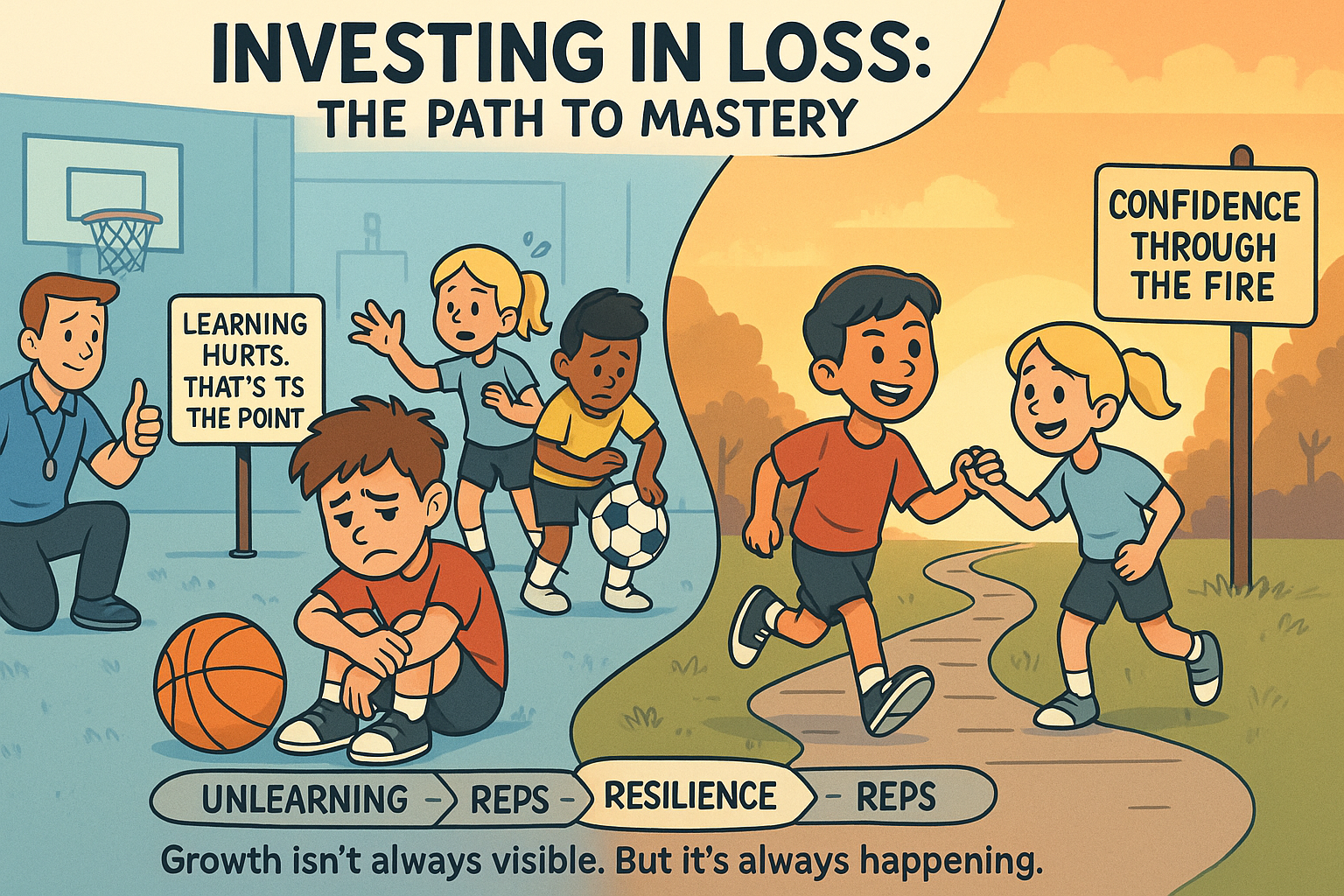Prototype Performance and Recover Series Part 8: Why we get sore
Prototype Performance and Recovery Series: Part 8

Why we get sore: The Science of Soreness: Understanding Muscle Pain and Adaptation
As we progress with Prototype Performance and Recovery, it’s on our mind to continue to educate all of our members and give our insights into why recovery matters .
As I was discussing what topics would be interesting with our two interns, Abbie and Gaby (both exercise science majors) were curious around why and what actually makes you sore. They were good questions and got me thinking about how to take something that can seem simple… “you exercise then you get sore” but to get into the why behind it. It was interesting as there are some real nuances associated with soreness, so my goal with this blog is to help you both understand the “why” and what you can do if you are constantly sore.
First…What Makes Muscles Sore?
Muscle soreness, particularly after intense physical activity, is a common experience for many individuals. This soreness we experience can be broken down into Acute and Delayed.
First… Delayed Onset Muscle Soreness (DOMS), typically peaks 24 to 72 hours after exercise. Acute-onset muscle soreness (AOMS) which is almost immediate is that burning sensation you feel in a muscle during a workout due to a quick buildup of metabolites during intense exercise. This can go away after a few hours. What most people experience and what to get rid of or reduce is DOMS.
DOMS is believed to be caused by microscopic damage to muscle fibers, particularly when the muscles undergo eccentric contractions (lengthening under tension) during activities such as downhill running or the lowering phase of a weightlifting exercise OR doing something strenuous that your body isn’t accustomed to doing. For instance, if I (who doesn’t play basketball), played for 60 minutes, even though I workout regularly 5 days a week, I may experience soreness in muscles or even my joints that I’m not accustomed to.
Why Do Muscles Get Sore?
As I mentioned above, when muscles are subjected to unfamiliar or strenuous activity, small tears occur in the muscle fibers. This damage triggers an inflammatory response as the body begins to repair the tissues, leading to soreness. The pain and stiffness associated with DOMS are a result of the body’s healing processes, including the repair of the damaged muscle fibers and the adaptation to the new levels of stress.
The Role of Training Volume and Novelty
Training volume and the novelty of an exercise significantly impact muscle soreness. High training volume, especially with insufficient rest, can exacerbate muscle damage and prolong soreness. Additionally, introducing a new exercise or significantly changing the intensity or duration of an activity can lead to increased soreness as the body adapts to the new demands. As a for instance, the soreness you may feel from doing 100 Squats in a row vs. 20 sets of 10 with rest in between, while the TOTAL VOLUME is still 100, your body may experience a different level of soreness due to the reduction in rest between. If you are accustomed to doing that type of volume, you may not feel the same level of soreness as someone who is less trained.
Research Insight: A study published in the Journal of Strength and Conditioning Research found that unaccustomed eccentric exercise resulted in greater muscle soreness and higher markers of muscle damage compared to concentric exercise. This suggests that the novelty and specific type of muscle contraction play a critical role in the onset and severity of DOMS. So the eccentric part of the Squat is the lowering phase (squatting down)… your muscles (quads and glutes) are lengthening under tension vs. the concentric phase is the rising/standing up phase of the squat, where your quads and glutes are shortening (or contracting) to complete the exercise.
Training Principles: SAID Principle
The Specific Adaptations to Imposed Demands (SAID) principle is crucial in understanding how the body adapts to training stimuli. According to the SAID principle, the body adapts specifically to the type and intensity of physical stress imposed on it. For instance, if you regularly perform strength training exercises, your muscles will adapt by becoming stronger and more resistant to fatigue.
Example: If a runner begins incorporating strength training into their routine, they might initially experience significant soreness due to the new type of stress on their muscles. Over time, as their body adapts, they will experience less soreness and improved performance in both running and strength activities.
Delayed Onset Muscle Soreness (DOMS)
DOMS is a well-documented phenomenon in exercise science. It is characterized by muscle pain, stiffness, and tenderness, typically manifesting after activities that the body is not accustomed to. The exact mechanisms behind DOMS are still being studied, but it is generally agreed that microscopic tears in the muscle fibers lead to an inflammatory response, which causes the pain and discomfort associated with DOMS.
Research Insight: A review published in the European Journal of Applied Physiology highlighted that while DOMS is a normal response to intense or unfamiliar exercise, its severity can be mitigated through gradual progression in training intensity and volume, proper warm-up, and cool-down routines, and adequate nutrition and hydration.
How Training Volume Impacts Soreness
Training volume, which includes the total amount of weight lifted, the number of repetitions and sets, and the overall duration of exercise, plays a significant role in muscle soreness. High training volumes, especially when combined with insufficient recovery time, can lead to increased muscle damage and prolonged soreness. On the other hand, a well-structured training program that progressively increases volume can enhance muscle adaptation and reduce the severity of DOMS over time.
Adaptation and Recovery Strategies
To manage and minimize soreness, it is essential to follow strategies that promote recovery and adaptation. These include:
- Gradual Progression: Increasing training volume and intensity gradually allows the body to adapt without excessive muscle damage. This is why we take a prescriptive approach in our coaching and suggest reducing the volume in a class workout especially if you haven’t trained much OR took some time off from training.
- Active Recovery: Engaging in low-intensity activities, such as light jogging or swimming, can help reduce muscle stiffness and promote blood flow. In addition, this is where our recovery tools such as our infrared Sauna, compression sleeves and cold plunge can speed up the recovery time.
- Adequate Nutrition: Consuming a balanced diet rich in protein, carbohydrates, and healthy fats supports muscle repair and recovery. If you have questions around this, we are always happy to prescribe and give you information to help you!
- Hydration: Staying well-hydrated aids in muscle function and recovery. Water and electrolytes are critical here. Best practice is drinking anywhere from 90-125+ ounces of water per day. This is also based on your bodyweight and physical activity level. Just think… the more you sweat, the more you want to replenish.
- Rest: Ensuring adequate sleep and rest days between intense training sessions allows the body to repair and adapt. 7-8 hours per night of uninterrupted sleep is ideal but can be hard to accomplish. There are a lot of strategies to help improve sleep. If this is an area you struggle with due to stress, work, or some other reasons, let us know and we are happy to help!
Conclusion
Understanding the science behind muscle soreness and the body’s adaptation processes is crucial for optimizing training and recovery. By acknowledging the factors that contribute to soreness and implementing effective recovery strategies, individuals can enhance their performance and reduce the risk of injury. At Prototype Training Systems, we emphasize the importance of tailored training programs that respect the body’s need for gradual adaptation and recovery, ensuring our members achieve their fitness goals safely and effectively.
By applying these principles and insights, athletes and fitness enthusiasts can navigate their training journey with a better understanding of how to manage and mitigate muscle soreness, leading to more consistent and enjoyable progress.
The post Prototype Performance and Recover Series Part 8: Why we get sore appeared first on Prototype Training Systems.
Previous Blogs

Climb to New Heights
Prototype Training Systems is more than a gym - it is a lifestyle. Join us today!



